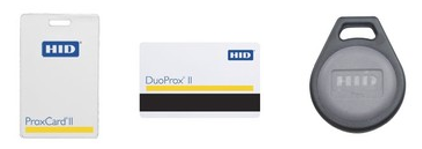 Loading... Please wait...
Loading... Please wait...Shop by Product
Blog - proximity cards
Proximity Cards: An Overview of How They Work
Posted by Evergreen ID Systems on 24th Sep 2014
Organizations that make use of ID cards are increasingly relying on proximity cards to increase their capabilities and enhance their level of security. Thanks to advances in the technology, the cost of these cards and the specialized readers they use has dropped significantly, meaning that proximity cards are now a viable option for everyone. Learn more about how they work and the benefits they provide, and decide if it's time to upgrade to proximity cards.

How Do Proximity Cards Work?
The technology behind proximity cards is deceptively simple. The vast majority have an antenna made from a coil of wire, a capacitor, and an integrated circuit. These three component are sealed inside the card, meaning that these cards are slightly thicker than a traditional ID card, but not by much. When the card is held close enough to the card reader – typically within 2 inches – the technology inside the cards transmits a specialized ID number to the reader. If that number matches a number in a database, the user is granted access. These are typically know as passive cards, because the distance between the card and the reader needs to be relatively small.
A technology called active cards allows for more distance between card and reader, and offers a number of advantages in select situations. These proximity cards contain an internal lithium battery that boosts the signal sent from card to reader and allows the card to remain operational as much as 500 feet away. The battery inside typically needs to be changed every 5-7 years.
5 Benefits of Using Proximity Cards
In ways both predicable and unexpected, proximity cards offer a number of advantages over traditional ID cards.
- Maintenance – Proximity card readers have no moving parts, meaning that they last much longer than traditional card readers. The same is true for the cards themselves. There is also less risk of tampering or damage since the readers have no opening. The readers can also be integrated directly into the wall for added security and aesthetics.
- Convenience – Traditional card readers require the user to put down a load and engage with the reader in order to gain entry. This can be both frustrating and time consuming, particularly over the long term. Proximity cards provide the same level of security but allow users to gain entry without having to engage as much with the reader. In the case of active cards, users can gain entry to secured roadways without having to stop at a security checkpoint.
- Security – Proximity cards allows for a deeper level of encryption. In extremely sensitive areas, this provides an extra level of security that further ensures only authorized parties are allowed inside.
- Cost – The cost of proximity cards is not significantly more than traditional ID badges. And considering the money saved on maintenance, the costs can even be rough equivalents. That means you can increase your level of security and make things more convenient for users without inflating your budget.
- Future Applications – Many experts predict that all ID cards will rely on some sort of proximity technology in the near future. The capability of these cards is expected to increase as they also become more secure and more flexible. Switching over to a proximity-card based system now rather than later allows you to take advantage of this quickly-evolving technology.
If you are interested in learning more about the logistics of proximity cards, contact Evergreen ID Systems. Our experts can explain the details of implementation and help you find card production supplies that meet the specific needs of your organization. Contact us today to explore your options further.




